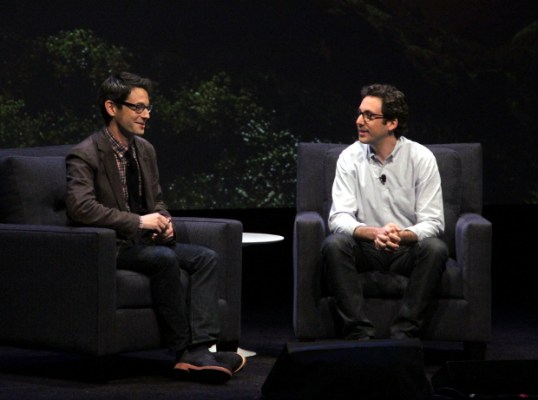Warby Parker, like so many other lifestyle/tech hybrid companies, faced the problem many small companies see while trying to launch a real brand: how do you make the story resonate?
Neil Blumenthal, co-founder of the company, spoke at the Wired Digital Conference where he described Warby Parker as a “mission driven” company. Blumenthal said that the idea behind the company came when a friend left a $700 pair of glasses in an airline seat pocket. Having seen how cheap glasses are made in Asia at the same factory that made those $700 glasses while working at a non-profit, Blumenthal imagined a lifestyle brand that reduces the friction associated with hopping down to the optometrist.
“There’s a strong business rationale for everything we do,” he said. “We’re doing good in the world.”
The company is a mere three years old and Blumenthal and the other founders spent a full year working on a few basic things, including building a narrative around the brand.
“We only invested into three things the first year: to start our first collection, our website, and PR,” he said. Blumenthal later talked up importance of having a socially responsible mission — in this case, the company’s buy a pair, donate a pair Do Good program — and the effect it could have on driving sales. According to Blumenthal, having that sort of vision increases customer loyalty and word of mouth buzz — right now, about half of Warby Parker’s sales are driven by word of mouth.
The final step in the plan? Raising awareness. Even before the company moved to New York and began creating pop up shops, the nascent Warby Parker team allowed customers to come up to the office (a.k.a. Blumenthal’s apartment on Philadelphia’s Walnut Street) to try on frames. They got very lucky. Business took off.
“When we launched, within 48 hours we had to suspend the home try-on program because of lack of inventory,” he said.
The company became so successful that the office they worked in SoHo kicked them out – customers who wanted to visit the office were using the elevator so much, they broke it.
